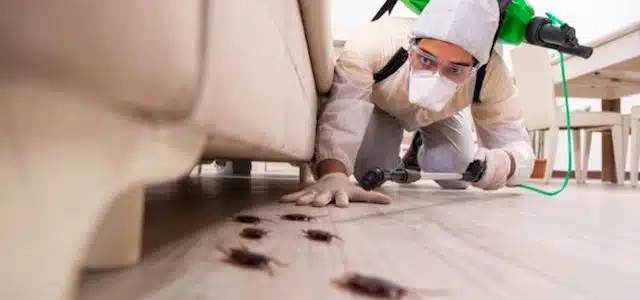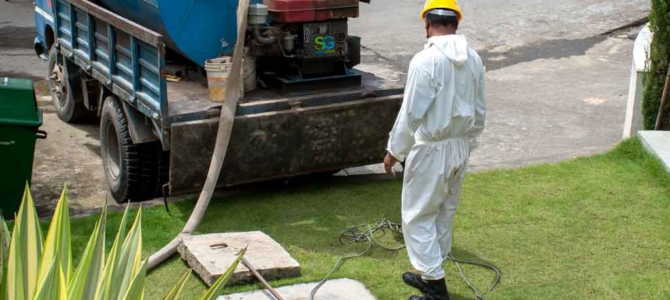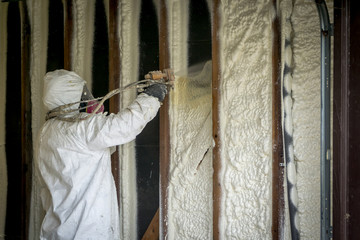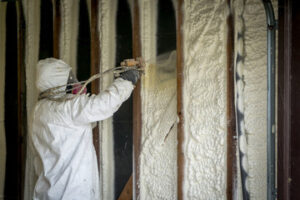Pests can damage or spoil crops, food stores, yards and homes. They may also introduce diseases into human populations.
Some pests emit allergens that trigger asthma and other respiratory problems. Others, like mice and cockroaches, spread germs that can cause diarrhea and other illnesses. Contact Pest Control Vancouver BC now!
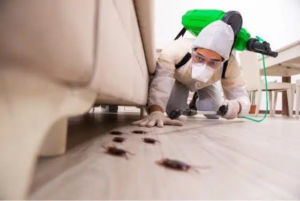
Pest control strategies attempt to manage the unwanted organism through a combination of natural, biological, mechanical and chemical means.
Eliminate Clutter
Clutter provides hiding places for pests to breed and hide, and it also enables them to spread quickly. Eliminating clutter from your home or business will make it harder for pests to survive and thrive. Clutter can be anything from unused lawn equipment crowding your garage to stacks of books gathering dust on your shelves. The important thing is to remove any items that aren’t adding value to your life or helping you manage your space.
Once you’ve eliminated the clutter, a few other simple steps can help control your pest problem and keep it from coming back. Before you use any chemicals, it’s best to try to understand your pest’s behavior and needs. This will allow you to decide whether the pests are causing enough damage to warrant action.
Pests come in a wide range of shapes and sizes, from rodents to insects and even plants. Generally, pests are unwanted because of the harm they cause to human or animal health or property. They can transmit diseases, destroy or spoil food and other materials, and contaminate water supplies. In some cases, pests even pose safety risks, such as when fire ants attack people or when termites threaten the structural integrity of buildings.
Using Integrated Pest Management (IPM) strategies is the most effective way to prevent pests from invading your home or business. IPM is a comprehensive approach to pest control that includes prevention, suppression and, when necessary, eradication. Prevention involves keeping pests out or reducing their numbers to an acceptable level, and causing as little harm as possible to the surrounding environment. Eradication is rare, but it can be done in outdoor situations where certain pests cannot be tolerated, such as the Mediterranean fruit fly or gypsy moth.
The main goal of IPM is to reduce or eliminate the need for chemical pesticides, which can be dangerous to human health and the environment. This can be achieved by combining different tactics, such as exclusion, habitat modification, mechanical controls and chemical control, in an integrated fashion. Keeping your landscape and garden healthy, reducing clutter, sealing cracks and preventing entry points are all key components of IPM and can help minimize your reliance on chemical control methods.
Trim Vegetation
Keeping your yard and garden well-maintained helps reduce pests. Regular trimming of trees, shrubs and other vegetation keeps pests from nesting or hiding in the foliage. It also prevents them from having easy access to your home and other structures on your property. If you aren’t comfortable doing this yourself, consider hiring a professional pest control service.
The most important first step in a pest management program is accurate identification. This is crucial because the more you know about a particular pest, the easier and more cost-effective it will be to control it. The key to this is knowing what the pest looks like, where it lives and when it’s most active. It will also help you determine if it’s really a problem and if you can tolerate its presence for the time being.
Physical pest control methods include traps, bait stations, and removing or blocking entry points. This is generally the fastest way to gain control of an infestation. However, it’s vital to choose the right trap for the job and to monitor and clean them regularly. Also, make sure traps are placed away from where children, pets or native wildlife may be harmed.
Chemical pest control includes a wide range of substances that kill or inhibit a pest’s ability to reproduce or cause damage. They can be used in combination with other tactics such as exclusion or quarantine, repulsion, physical removal and biological controls. However, when using pesticides it’s vital to follow label instructions carefully and only apply the recommended amount. Otherwise, other pests or even the intended target species may be harmed by unintended side effects.
Natural forces act on all organisms, including pests, causing their populations to rise and fall. These include climate, natural enemies, natural barriers and the availability of food and water. The natural enemies of pests include predators, parasites and pathogens. There is usually a lag between a pest population increase and the number of natural enemies that are available to reduce it. Other ways to supplement a pest’s natural enemies include the introduction of genetically modified enemies, such as sterile males, and the use of juvenile hormones and pheromones to influence a pest’s behavior.
Seal Entry Points
Rodents and pests enter homes through tiny cracks, crevices, and gaps. In addition to being a nuisance, these unwanted invaders can cause serious health and safety issues as well as extensive property damage. Thankfully, by identifying and sealing entry points, you can prevent pests from entering your home.
As the seasons change and temperatures drop, pests are on the hunt for a warm place to shelter and breed. Many of these critters seek access through small gaps and cracks, which makes your home the perfect hiding spot.
Sealing these entry points is a proactive strategy that can significantly reduce the risk of infestation and improve energy efficiency. Fortunately, this simple task is easy to accomplish with the right materials and knowledge.
Whether you are dealing with mice, rodents, or insects, most entry points are located around doors and windows, vents, and utility lines. Examine these areas carefully and seal any voids with caulking or expanding foam. For gaps around doors, use weather stripping to create a tight seal and keep pests out. For vents and chimneys, make sure that you cover openings with mesh screens to block out birds, rodents, and insects.
Foundation cracks, especially those near crawl spaces and basements, are common pest entry points. These cracks, which can result from natural settling, changes in the climate, and environmental factors, are like open doors for pests, such as ants, termites, and rodents. Seal these cracks with silicone-based caulk or expanding foam.
It is also important to inspect the roof and attic regularly to locate missing shingles, holes in the soffit, and leaks. These are potential entry points for pests, including cockroaches, ants, and rodents, which can enter through these openings and gain access to your food, water, and warmth.
You should also look for cracks in the walls and attic, as these may lead to other problems. For example, if you notice that there are a number of cracks in the foundation of your house, you might need to hire a professional for concrete patching. However, if the cracks are minor and not causing structural concerns, you can use concrete caulk to seal them.
Keep Your Home Clean
When pests are trapped inside buildings or structures, they can contaminate food, cause damage and create fire hazards. A well-maintained pest control programme can prevent these problems and reduce the cost of maintenance.
The most common types of pest control involve trapping or killing or repelling pests. The best methods depend on the type of pest and the environment in which it lives.
Physical pest control involves creating barriers to prevent pests from entering a home, garden or business. It also includes eliminating their breeding ground. This is known as “pest proofing.” It can be done by installing screens, fitting rodent-proof window and door seals and blocking all entry points with a solid barrier. Other physical measures include setting up traps and bait stations, using a range of repellents and spraying for pests.
Chemical pest control uses chemicals to kill or repel pests. It can be one of the most effective methods, but it can also pose health risks to humans and pets. It is important to use chemicals sparingly and always follow label instructions to minimise exposure.
Biological pest control uses natural enemies of the pest to reduce its numbers. It may include predation, parasitism or herbivory. It can also involve augmenting the natural enemy population in an area by introducing more, either in small, repeated batches or as a single large-scale release.
While some people think that a clean home or office will deter pests, the opposite is usually true. A dirty, unsanitary environment attracts flies, mosquitoes, rats, mice and other unwanted pests. It can also make existing pests such as houseflies, cockroaches and termites more resistant to treatment.
Maintaining a Clean Environment
Pests that infest commercial properties and homes can contaminate food, deteriorate furnishings and textiles and cause structural damage. A well-maintained pest control programme eliminates these problems and contributes to a healthy living or working space.
It is possible to prevent most pest infestations by taking a variety of preventative steps. A pest-free environment not only improves health and safety, but it can also boost morale and productivity. Phil Taylor is the director of pest control firm Pest2Kill. The company is a multi-award winning Sydney pest control service with over 7000 satisfied customers. He is considered a leader in the industry and regularly provides commentary on pest control issues to media outlets and publications such as Facility Perspectives and FM Media.
